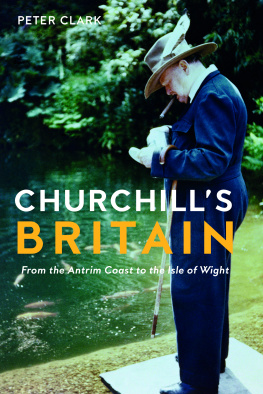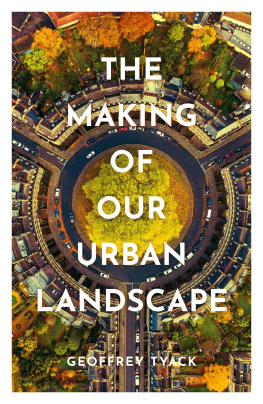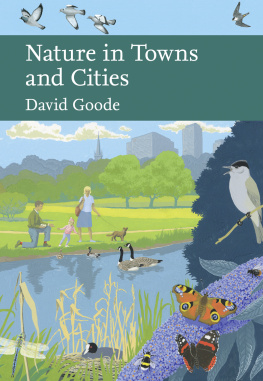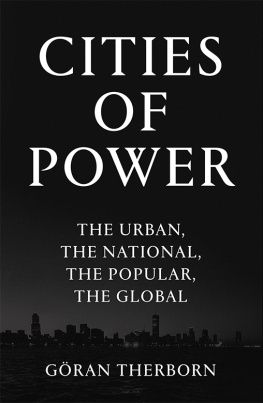THE OXFORD HANDBOOK OF
CITIES IN WORLD HISTORY
THE OXFORD HANDBOOK OF CITIES IN WORLD HISTORY
Editorial Board
Peter Clark, editor
University of Helsinki
David Mattingly, assistant editor for Early Cities
University of Leicester
Lynn Hollen Lees, assistant editor for Modern and Contemporary Cities
University of Pennsylvania
Marc Boone
University of Ghent
Peter Burke
University of Cambridge
Renata Holod
University of Pennsylvania
William Rowe
The Johns Hopkins University
THE OXFORD HANDBOOK OF
CITIES IN WORLD HISTORY
Edited by
PETER CLARK


Great Clarendon Street, Oxford, OX2 6DP,
United Kingdom
Oxford University Press is a department of the University of Oxford.
It furthers the Universitys objective of excellence in research, scholarship, and education by publishing worldwide. Oxford is a registered trade mark of Oxford University Press in the UK and in certain other countries
The editorial material and arrangement the Editor 2013
The chapters the various contributors 2013
The moral rights of the authors have been asserted
First Edition published in 2013
Impression: 1
All rights reserved. No part of this publication may be reproduced, stored in a retrieval system, or transmitted, in any form or by any means, without the prior permission in writing of Oxford University Press, or as expressly permitted by law, by licence or under terms agreed with the appropriate reprographics rights organization. Enquiries concerning reproduction outside the scope of the above should be sent to the Rights Department, Oxford University Press, at the address above
You must not circulate this work in any other form and you must impose this same condition on any acquirer
British Library Cataloguing in Publication Data
Data available
ISBN 9780199589531
Printed in Great Britain by
CPI Group (UK) Ltd, Croydon, CR0 4YY
Links to third party websites are provided by Oxford in good faith and for information only. Oxford disclaims any responsibility for the materials contained in any third party website referenced in this work.
PREFACE
This book has been written at a time when the city has been pushed to the worlds centre stage as never before. Not only do more people now live in cities than in the countryside, consuming a high proportion of global natural resources, but the economic and financial crises of 2008 and 2011 have had a seismic effect on the urban balance of power between Asia, other so-called developing regions, and the advanced West, whilst the popular uprisings in the cities of the Middle East have opened up a new political and cultural landscape in that region with radical resonances elsewhere. Given that many of the worlds leading cities have existed and been important for centuries, if not millennia, the need for a wide-ranging, comparative examination of global urban development which puts current economic, social, political, and cultural changes in an extended historical perspective has never been greater.
The proposal for this book came from the publisher. It has posed many challenges. First, because as we explain in the Introduction (), despite the enormous increase of research on urban history in recent years, most of it has involved national or regional studies, and there has been much less interest in comparative analysis on a transcontinental scale. So a network of around fifty leading scholars interested in global comparative research, a scientific Ark, had to be built from scratch. Linked to this is the problem that national funding councils, while giving lip service to global perspectives, prefer to support regional or local projects. Lastly, in the age of accountancy publishing, the constraints on editors and authors are inevitably stringent: not all towns and cities, not all topics could be covered in this work. All funding for illustrations, meetings, and the like had to be raised by the editor and authors.
Nonetheless, the book is the first detailed study of the worlds principal urban systems from early times to the present day. The aim from the start was to organize an integrated work with arguments, discourses, and themes: not an encyclopaedia of miscellaneous articles. This does not mean that there is a consensus, party line on global urbanization and its consequences. In fact the book explores a great plurality of views and ideas; thus on the figures for urban populations there is considerable diversity of opinion, reflecting the fragility and/or complexity of the data. To promote dialogue we organized two international conferences, at the University of Helsinki in May 2010 and at the University of Pennsylvania in April 2011, at which most contributors, in the fertile tradition of urban history, debated, argued, and indeed created the essence of the book with a good deal of hard talking and modest sociability. We are most grateful to the University of Helsinki, the History Department, Helsinki University, Urban Facts, Helsinki City, the Royal Netherlands Embassy, Helsinki, and the Ella and Georg Ehrnrooth Foundation for funding and supporting the Helsinki meeting. My former assistant Matti Hannikainen was invaluable in coordinating the meeting, along with Suvi Talja, Richard Robinson, Rainey Tisdale, and Niko Lipsanen. We are equally indebted to Renata Holod for taking the lead in organizing the Philadelphia meeting and to Nancy Steinhardt and Lynn Lees for helping her. Funding for the Philadelphia conference came from the University of Pennsylvanias Provosts Fund for International Projects, the School of Arts and Sciences, School of Design, the Penn Institute for Urban Research, the Center for Ancient Studies, the African Studies Center, the Middle East Center, Center for East Asian Research, the History Department, the History of Art Department, the Penn Museum, and Bryn Mawr College, and we thank them for their generosity. Gregory Tentler provided valuable logistic support, and John Pollack and Dan Traister from the Van Pelt Library of the University of Pennsylvania coordinated a superb exhibit of early modern urban maps, one of which is reproduced in this volume.
Other debts are no less important. As editor, I am very grateful to David Mattingly and Lynn Lees, assistant editors for the early and modern periods respectively, for their invaluable advice, encouragement, and (when needed) solace; also to the other members of the editorial group for their support. The University of Helsinki gave financial help for producing the illustrations; Matti Hannikainen helped to coordinate the contributors website for the volume; and Mark Elvin, Graeme Barker, and Martin Daunton gave important advice at an early stage.
We are particularly grateful to Niko Lipsanen for drawing most of the Regional Maps and a number of the Figures; Suvi Talja also assisted. The China Map for the ancient period was drawn by Sijie Ren, University of Pennsylvania.
At Oxford University Press Stephanie Ireland, Emma Barber, and Dawn Preston helped at the rather difficult production stage. Susan Boobis prepared the index.
Last but not least, the book owes an enormous amount to those authors and their families (Laurel and Tobias, children of contributors, were born during this enterprise!), as well as institutions, who supported the venture with enthusiasm and commitment.
Next page











